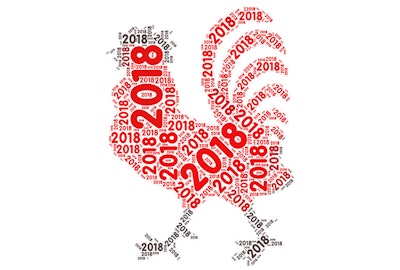
America’s increasing production of poultry meat will supported by underlying economic trends, according to a leading industry analyst.
Dr. Paul Aho, a poultry industry economist and consultant with Poultry Perspective, spoke about trends affecting the poultry and grain markets on Jan. 31, 2018, as part of the Poultry Market Intelligence Forum at the 2018 International Production & Processing Expo. Aho said while production of chicken, along with other animal proteins, is growing in 2018, global and domestic economic trends show that the market should comfortably handle more product.
Outlook for the poultry market
In the U.S. chicken consumption is steadily rising after facing a steep drop in 2008 and 2009, when the global economic downturn reduced budgets for meat. As the U.S. economy improved in the years following the recession, and median household income grew, total meat consumption increased steadily.
After a profitable year, U.S. chicken producers will be bringing more product to market in 2018. Aho said he expects there will not be too much chicken meat – as well as beef and pork – on the market this year. Broiler production should be up by about 2 percent in 2018, while beef and pork will grow by 5 percent and 4 percent, respectively. In total, 3 billion pounds of red meat and poultry will be on the market.
The increase in median household income and continued growth of the U.S. economy suggest higher meat production will not be a problem. However, if these trends change, the increased production levels could be challenging in the future.
In deboned breast meat, Aho predicts another profitable year, but not as profitable as 2017. The peak price should be lower than 2017.
U.S. export issues
In 2017, the global economy improved. Oil prices were higher than 2016, there were no trade problems with Mexico – the top buyer of U.S. chicken leg quarters – and the dollar fell against the Mexican peso and other currencies making exported leg quarters more competitive.
This year the world economy should maintain its strength and oil prices will rise again, which is a plus for oil exporters. The big question for 2018, Aho said, is the future of the North American Free Trade Agreement (NAFTA) and the U.S.’ trading relationship with Mexico.
Mexico is a critical market for U.S. exports. It purchased 1.3 billion pounds of chicken leg quarters in 2017, or 23 percent of all leg quarter exports. Mexico is also the destination of 61 percent of the U.S. turkey exports. Aho said the U.S. shouldn’t alienate Mexico and if NAFTA is amended in 2018, then it would best if all of the agriculture policy remained intact.
Turkey market outlook
Turkey industry profitability should improve during 2018, Aho said. In 2018, there will be a small increase in turkey production, but the industry will heal in 2018 and should start seeing better prices – after facing abnormally low prices in 2017 – by the end of the year. The turkey price may bottom out in early 2018 but steadily recover over the course of the year.
















